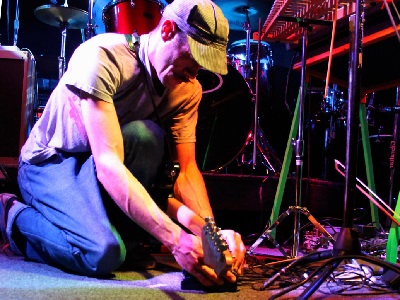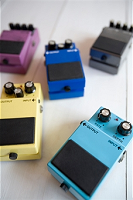How to Use Distortion Guitar Effects Pedals
 Let’s face it; you can’t always get the desired tone out of your amp. Sometimes, tweaking an amp for hours on end can leave your ears burnt out for a few days, and most of us who have been in bands know how that feels; while it doesn’t hurt, it is annoying, because, after that point, nothing really sounds good or proper for at least a few days.
Let’s face it; you can’t always get the desired tone out of your amp. Sometimes, tweaking an amp for hours on end can leave your ears burnt out for a few days, and most of us who have been in bands know how that feels; while it doesn’t hurt, it is annoying, because, after that point, nothing really sounds good or proper for at least a few days.
Pedals are one of the best ways to get a different tone out of your amp, even if just to add a little bit of punch, or tighten up what you already have. In this article, we will talk all about how to use a distortion guitar effects pedal.
Now, there is something that you should be aware of before we even get into this article; not all pedals are built the same. Some pedals will do a lot to add to your tone or tighten up your distortion, while others won’t do much more than make your amp screechy and unpleasant sounding. Pedals should by no means be used to compensate for poor playing.
This means that buying an effects pedal isn’t a one-way, Golden Ticket out of practicing your guitar on a weekly, and sometimes daily, basis. Pedals won’t make you better; you could have the greatest tone in the world and still be a poor player due to your lack of practice. Don’t let yourself become confused; a pedal will not make you Eddie Van Halen or Steve Vai. It may get you their tones, but it will not give you their skills.
Tips to Using a Distortion Pedal Correctly
 For the first usage of a guitar distortion pedal, beefing up your tone and adding some punch, you’ll want to lay back on the gain on your amplifier. This is because, if you have too much distortion from both amps, things could get very fuzzy very quickly.
For the first usage of a guitar distortion pedal, beefing up your tone and adding some punch, you’ll want to lay back on the gain on your amplifier. This is because, if you have too much distortion from both amps, things could get very fuzzy very quickly.
The best thing to do is go down to about nine or ten o’clock on your gain setting, then adjust the pedal to a distortion level that suits your own personal tastes. Take a break every once in a while so that you can keep your ear fresh, and never, under any circumstance, stick your ear against your amplifier to try and get a “better listen.”
Not only will this do absolutely nothing for you, but it can cause damage to the inner ear. Be smart; keep the volume reasonable, at whatever level it becomes full bodied, and adjust with your head well away from your amp.
For the second usage, tightening up your gain, you want to keep your gain setting on your amp at the level which you normally keep it if that’s the level you prefer. Then, what you do is put the pedal into your chain, and turn the distortion on the pedal completely off. This will take your amps distortion and tighten it up. Adjust the other settings to your liking.
Now that you know how to use a distortion guitar effects pedal, go work on your tone settings!
The Best Tool For Learning to Play the Guitar
For the ultimate step-by-step guitar system, we highly recommend Gibon’s Learn & Master Guitar course. This award winning DVD course is currently on a 3-day sale and you get to save $100 off the regular price today!
Click here to learn more details and get the course before this promotion ends…







Leave A Comment